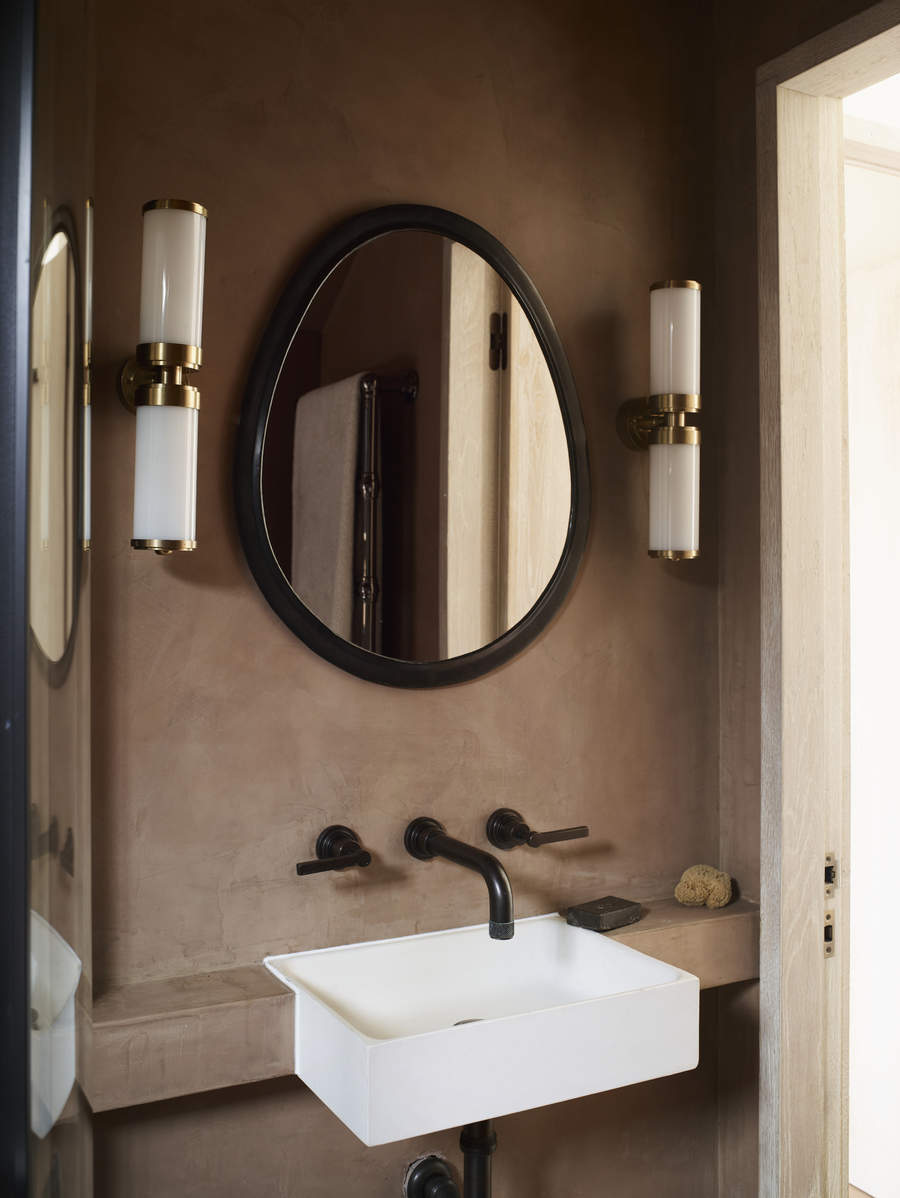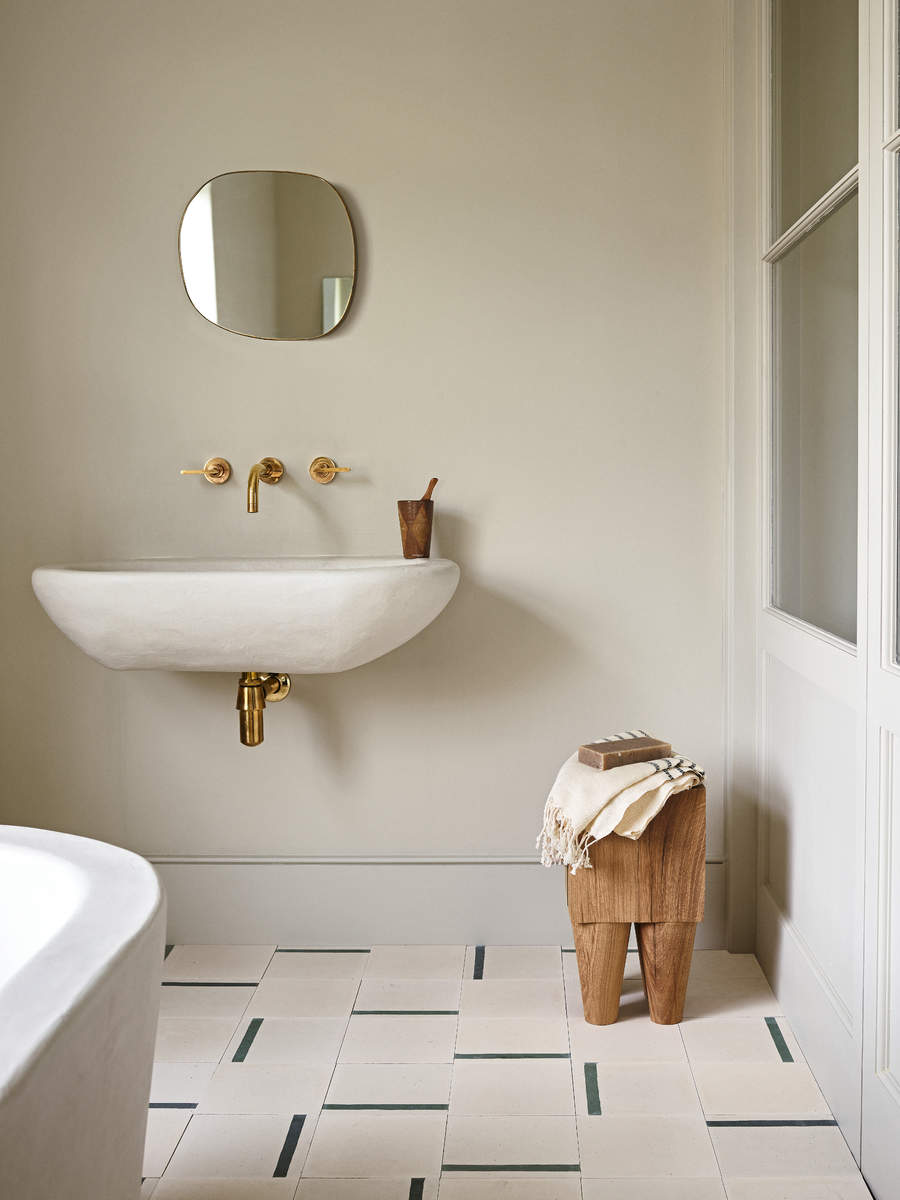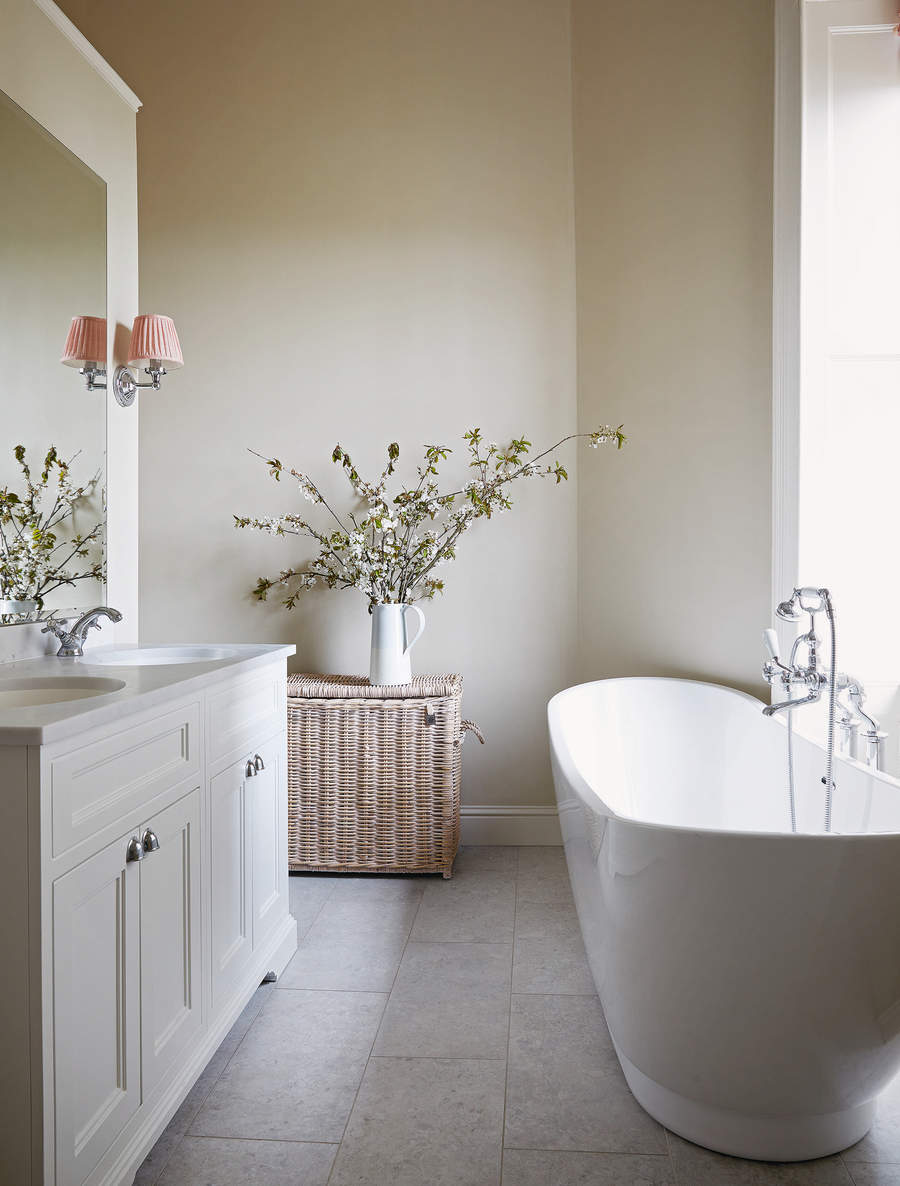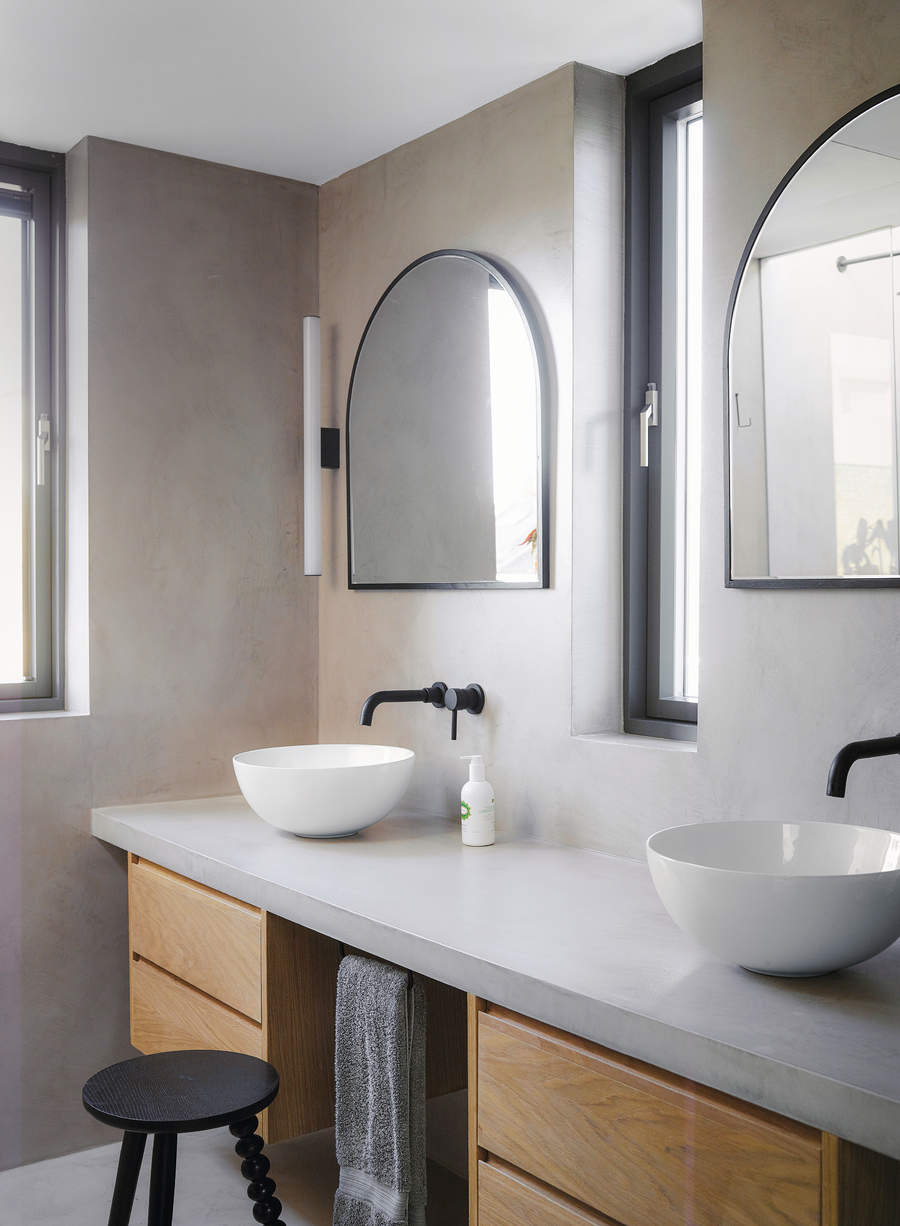
Heard the name Tadelakt plaster, but not sure what it is? Then you are about to find out. We are here to unravel the mysteries of this specialist plaster and give you the lowdown on how and where to use it.
Native to the Marrakech region of Morocco, Tadelakt is a natural, lime-based plaster and is one of the oldest plastering techniques in the world. It produces a unique appearance thanks to its ‘specialized process of application that includes ramming, polishing, and treating with soap.’ reveals Jay Sander of Maryland Contractors.
It is well known for its water resistant qualities and its unique and distinctive finish that gives a surface a natural organic appearance. Sound good? Then find out why you should consider it for your next bathroom or kitchen project.
How to use Tadelakt plaster
A unique, durable and good looking plaster Tadelakt can be a great alternative to more commonly used plasters in the home. Here we reveal its benefits, how it can be applied, where you can use it and what it costs.
What are the benefits of Tadelakt plaster?

Introducing Tadelakt plaster into your home brings with it plenty of plus points as Sanders explains, ‘Tadelakt is durable and requires no re-sealing. It is made from organic materials, which are eco-friendly and give an awesome appearance to areas they are applied to.’
It has a subtle, luxurious luster almost natural finish, but it's not just its green credentials and smooth, seamless surface that make it a prime candidate for any home as Sanders continues, ‘The most prominent of its benefits, however, is its waterproof abilities. If you hate slippery floors, then Tadelakt might just be the best option for you. It is proven to be resistant to mold and mildew making it the perfect plaster for bathrooms and kitchens.’ And as an added bonus it helps improve the air quality in a room.
How Is Tadelakt Plaster Applied?
As a specialist plaster Tadelakt is flexible on what substrates it can be applied to. These include tile backer boards, lime plasters, gypsum plasters, plasterboard, concrete block, breeze block and sand and cement. But these will typically need to be treated with a primer and a lime wall finish to get the surface you need.
When a surface is ready for application you mix the Tadelakt with the correct amount of water and leave to rest for 30 mins. If adding a tint/color this needs to be mixed to a paste, and added to the Tadelakt. The tint will make up around 10% by weight of the final mix.
‘Applying Tadelakt plaster is labor-intensive’, explains Sanders. ‘Multiple layers of a lime plaster and marble dust mixture, are polished with a river stone and treated with olive oil soap to create a waterproof surface.’
He suggests, ‘Before trying to apply it yourself, you must be sure to consider the size of the area to understand the volume of work needed. Even if you are a pro, you might still need assistance as applying Tadelakt plaster can be frustrating and requires ultimate patience and skills.’
Applying Tadelakt plaster is not a job for the DIY novice. There’s a high level of knowledge and craftsmanship involved. Even component DIYers, who rarely tackle plastering jobs, should consider calling in a professional to assist or do the job.
What are the creative uses of Tadelakt plaster in home interiors?

The waterproof qualities and unique finish make it a great choice for areas that contain a lot of moisture like bathrooms and kitchens.
It can be used on walls in bathrooms, a finish in showers and it's also a good choice to apply around sinks or areas where there’s splashback. In kitchens, it's great for sink splashbacks and even stylish countertops thanks to its durability and moisture resistance.
But it's not just bathrooms and kitchens where Tadelakt can make an impression as Sanders suggests, ‘Tadelakt plaster usage is not limited to wet areas like bathrooms and kitchens. It can be used to undertake a variety of DIY projects. It can creatively be incorporated to add some warmth and texture to home interiors.’
He continues, ‘While it is suitable for walls, showers, sinks, bathtubs, backsplashes and bathroom countertops, it can be used elsewhere such as a living room feature wall, offering a blend of modern design and traditional craftsmanship.’
But this isn’t the end of the home interior choices. Tadelakt is a multi-talented plaster and can be used on fireplace surrounds, creating built in seating and simply as decorative pieces around the home.
Best ways to clean, maintain and care for Tadelakt plaster
‘Maintaining Tadelakt plaster is straightforward and does not necessarily require an expert cleaning agent.’ says Sanders. ‘Cleaning can be done with a soft cloth and mild soap.’
Stick with the subtle options as others options are not good for the plaster. ‘Avoid harsh chemicals and abrasives as they can easily wear off the surface, reducing the lifespan of the plaster.’
To maintain and keep it looking good Sanders recommends, ‘Periodic olive oil soap re-application. It improves and maintains its waterproof quality and sheen. Minor damages incurred during cleaning, or due to its lifespan, can be fixed by re-polishing.’
How much does Tadelakt plaster cost?

The price of Tadelakt varies, but as a good guideline for materials it ranges from $5 to $10 per square foot. You can purchase a 44lb bag like this Tadelakt Moroccan Lime Plaster from Amazon for around $235 if you want to go down the DIY route.
But, if you are going to use a professional the price per square foot increases significantly as Sanders revelas, ‘Professional applications can increase the cost from $50 to $100 per square foot or more, depending on the project's complexity and location.’
He continues, ‘It's crucial to get professional quotes, to fully understand the investment for incorporating Tadelakt into a home. They can also provide the right estimates required for your project helping you avoid wastage and unnecessary expenses.'
It’s not the cheapest plaster finish for your home, but it has a lot of qualities that make it a long-lasting and attractive option, especially in bathrooms and kitchens. And if it fits your budget you should seriously consider it above other options.
Why Use Tadelakt Plaster?

Tadelakt plaster has a lot going for it. While its unique, smooth, attractive finish is a thing of beauty, it's not the only feature that it has going for it. Unlike some plasters, it is eco-friendly, making it a good choice for future-friendly homes. It is durable, giving it a long lasting finish, waterproof, and resistant to mold and mildew, making it a great alternative to tiles in a bathroom or kitchen.
Plus, it’s low maintenance and the cost is not prohibitive, so make sure to compare with other choices when preparing for your next home improvement project.
Tadelakt Plaster FAQs
What is the difference between Tadelakt and Venetian Plaster?
Both are lime-based, eco-friendly plasters that share a lot of the same qualities. They are durable, easy to maintain and are priced similarly. Venetian plaster typically isn’t as waterproof as Tadelakt and both their finishes differ.
Venetian plaster is considered a practical alternative to marble, giving a similar finish, while the finish on Tadelakt is more like natural stone and can be tinted.
How long does Tadelakt take to dry?
This will depend on the substrate that the plaster is being applied to and if it has been prepared properly. The temperature and humidity of the room will also have a bearing on how long it takes to dry.
But as a rough guide it takes from 2 - 24 hours to be touch dry. The final color of the Tadelakt is usually seen after 5-6 days, again depending on certain conditions. It Is typically fully cured/hardened after 3-6 months.
Plaster is back on trend for 2024, so why not try using this unique material to add character to any style of home?







